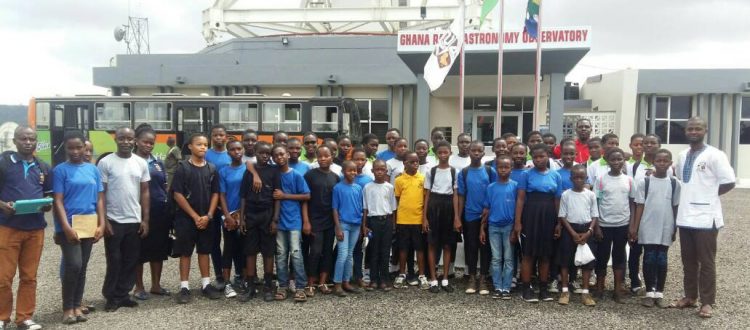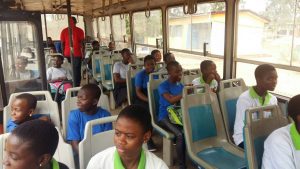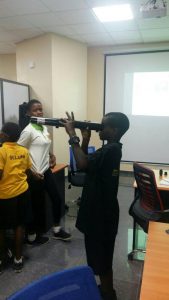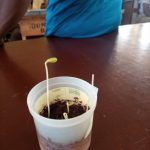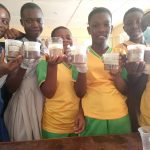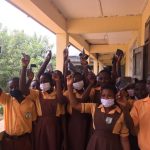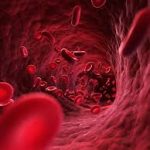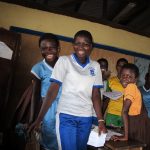Field trip to Ghana Radio Astronomy Observatory
‘I learnt exciting things. In fact I enjoyed the trip and I will never forget this day in my life’.
‘Among all the things I saw, I got fascinated about the fact an antenna almost 32 meter wide and built in the 1980s still looked new and stood firm on top of the building we entered’.
These are two comments shared by students and teachers who were beneficiaries of the trip to the Ghana Radio Astronomy Observatory on October 13th 2017.
40 Students and their club facilitators from the Exploratory clubs in A.M.E Zion and St. Sylvanus R/C Basic schools sang Exploratory songs in excitement as they board a bus on their school compounds to embark on a much awaited field trip to the Ghana Radio Astronomy Observatory at Kuntunse. The purpose of this trip was to expose students to practical application of STEM as well as to learn about the work of the institution, its main contribution to Ghana and the world at large, to meet and interact with role models from STEM backgrounds and to perform simple experiments.
Dr. Bernard Duah Asabere, the Manager of the facility welcomed us and told us the facility was commissioned by Dr. Hilla Liman and built by a Japanese company in 1991, under the Ghana Space Science Institution. The place was renovated and renewed as Ghana Radio Astronomy Observatory by His Excellency, Nana Addo Dankwa Akuffo Addo on 24th August 2017.
The area where the observatory stands is commonly known as “Satellite”. Kingsley, a student of Astronomy as well as our guide, affirmed that the facility is not a satellite station or a satellite office. He asked Emmanuel, one of our students, to define a satellite and added that satellite stations are established on earth to communicate with people in space. However, their facility was established to help transmit radio signals, increase signal connections of waves and also study celestial objects.
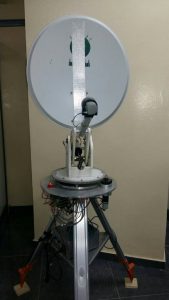
For us to have a better understanding of the work of the facility, we were divided into two groups, each group was asked to join Dr. Bernard Duah for a presentation on astronomy and also enjoy a tour on the facility and perform simple experiments.
Led by Kinsley, each group went to the Square Kilometer Array teaching area to learn about the 16 meter, 9 meter and the 32 meter antennas. We were told that the 16 and 9 meter antennas were still under construction whilst the 32 meter antenna has been mounted specifically on top of their building as a radio wave detector. He specified that the 32 meter antenna is used and operated remotely. It moves only sideways with an axial motion wheels that rotate underground at 0.09 degree per second and uses TV antennas and towers to transmit radio signals which enables us to tune our radio sets to different stations.
Summarizing our tour on the compound, students were told that Ghana’s Satellite is part of the Square Kilometer Array (SKA), a large multi radio telescope project that will collectively form the world’s biggest telescope. Currently they have about 7 to 8 partner countries namely: South Africa (MeerKAT), Australia (Parkes an ASKAP), UK (LoveU) and Germany (Effelsberg) and others with different types of dishes. With its sheer size and large antennas, the SKA will provide a giant leap and allow scientist to see 10 times further into space. SKA will investigate the nature of gravity and challenge the theory of relativity.
Eager to perform simple experiments, each group was given an opportunity to use a handheld telescope and performed an experiment on diffraction with a cut out card and a disk to show dispersion of light into its various components.
The presentation arranged by Dr. Duah Asabere touched on the formation of the universe, solar system and properties of celestial objects. He told us that celestial objects in space such as stars and galaxies, emit gases and electromagnetic radiations such as masers and quasars which can be measured and studied. They learnt that different telescopes can effectively bring these objects closer to us and that the capacity of a telescope to receive faint signals is a measure of its sensitivity.
Students were amazed to hear that the sun and stars are billions and millions away from the earth. They were curious to know more about dark energy, most especially when Dr. Asabere said it is the puzzling force that drives the universe to its expansion.
As the presentation continued, we were filled with wonder to hear that stars possess traits comparable, at least figuratively, to living things (produce young ones, age and die) and this process is evident when a star becomes bluish (young star), yellowish (medium age star) and reddish (old star).
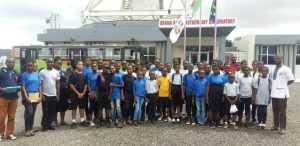
The room got all noisy and full of excitement when a challenge was thrown at us to define transit eclipse in our own words, another type of eclipse that is not as common as the already known solar and lunar eclipse.
The presentation ended with a take home message from Dr. Duah Asabere, who encouraged us to pursue Astronomy because it is ancient, scientific, exciting and a viable discipline with career prospects.
With gratitude and shouts of excitement we say thank you to Ghana Radio Astronomy Observatory a for giving us a chance to explore new things and new methods of doing things.
Written by Priscilla Awuah
